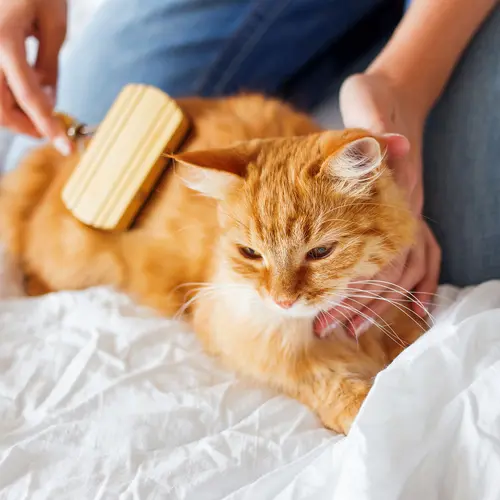Tooth resorption in cats is a unique kind of cavity that’s most common in felines. It can also happen in dogs, but not as often. Other names for this include feline odontoclastic resorptive lesion (FORL) and cervical line lesion.
A typical cat tooth has an inner chamber — called the root canal — that’s filled with a tissue made of blood vessels, lymph components, and nerves. This tissue communicates with the rest of the body. It’s surrounded by a hard, bony substance called dentin.
In tooth resorption, the dentin of one tooth — or many — begins to degrade and erode. This leads to lesions or damaged regions in the tooth. The decay begins at the base, near the root, and spreads to the entire tooth. Although any tooth can be affected, the premolars and molars are the most commonly affected.
Tooth resorption affects at least one tooth in 20% to 60% of all cats. Three-quarters of these cats are ages 5 or older, but tooth resorption can happen in cats as young as age 2.
Purebreds are the most susceptible. Siamese and Persian cats have the highest rate of tooth resorption.
What Are the Causes of Feline Tooth Resorption?
Some researchers believe that too much vitamin D in commercial cat foods causes lesions, but not all of them agree. More research is needed to determine the cause of feline tooth resorption.
What Are the Symptoms of Tooth Resorption in Cats?
Pain is the most obvious symptom of tooth resorption in cats, but that’s not always easy to see. Some cat's only symptom of tooth pain is grooming themselves less.
At home, you may see the signs of tooth resorption in the change of your cat’s eating habits.
Dietary symptoms in cats include:
- Attempting to chew on only one side of their mouth by tilting their head while they eat
- Food falling out from their mouth while they eat
- Refusing to eat
- A sudden preference for wet food
- Swallowing food without chewing
What Are the Stages of Tooth Resorption in Cats?
Feline tooth resorption usually has five stages:
- Stage one is the earliest stage of damage. The lesions are small and close to the base of the tooth.
- In the second stage, the lesions become larger but have not spread beyond the dentin.
- Deep erosion and severe lesions happen in the third stage.
- In stage four, the legions become severe. The tooth loses integrity and begins to become unstable.
- Stage five has chronic — long-term — lesions. It could also involve the crown — or the most visible portion of the tooth — falling off.
How is Tooth Resorption in Cats Diagnosed?
The lesions caused by tooth resorption in cats can be hard to see. X-rays are typically taken to estimate the damage to your cat’s teeth. These images allow your veterinarian to determine whether your cat’s dental problem is resorption, and if so, in what stage.
What Is the Treatment for Tooth Resorption in Cats?
The treatment for tooth resorption in cats depends on the progression stage. For stage one, the goal is to reduce the growth and spread of the lesions. The dentist will want to prevent the damage from happening in other teeth. Good dental care — including cleaning and yearly check-ups — will help with this.
In the second stage, vets may perform restorative filling on the teeth. Artificial material is used to fill in the holes caused by decay. This service isn’t available at all veterinary locations. For stages three, four, and five, the only effective treatment is surgery to remove your cat’s tooth — or teeth.
Tooth removal in cats can vary in price depending on the stage and veterinarian. Treatments are less expensive when cats don't need hospitalization. When surgery is necessary, the expenses include the anesthesia, X-rays, hospitalization, and medications.
How Can I Prevent Tooth Resorption in My Cat?
The prevention of tooth resorption in cats is possible with proper dental care. Awareness of dental diseases in cats and dogs can prevent and help in early problem recognition.

